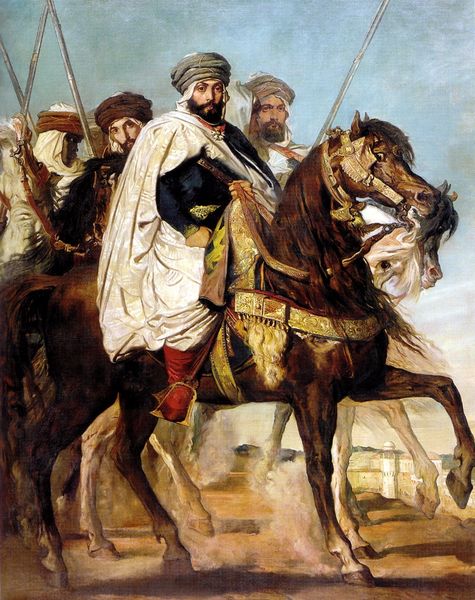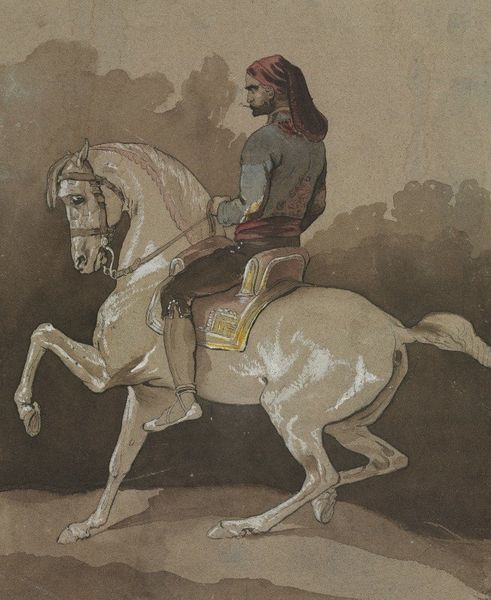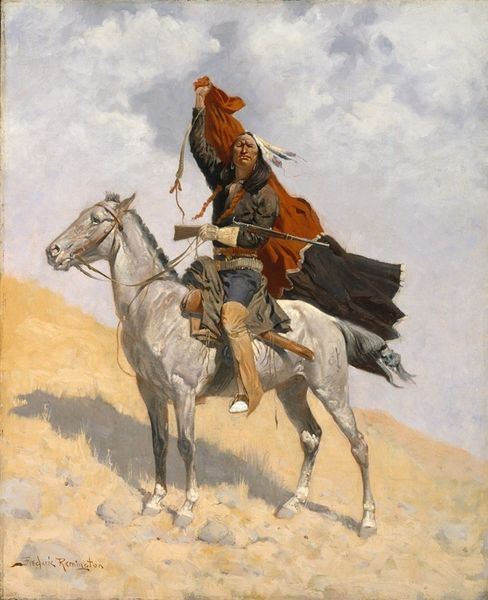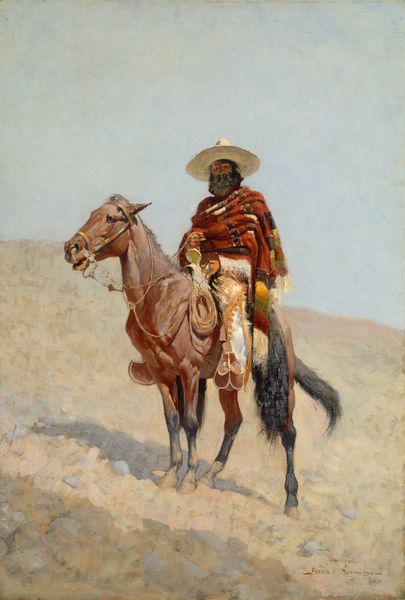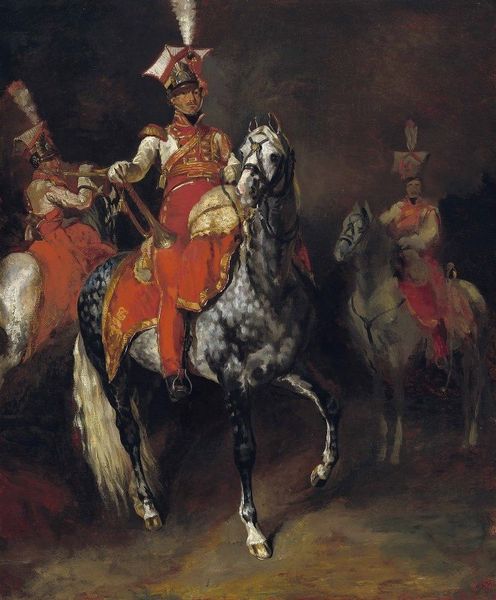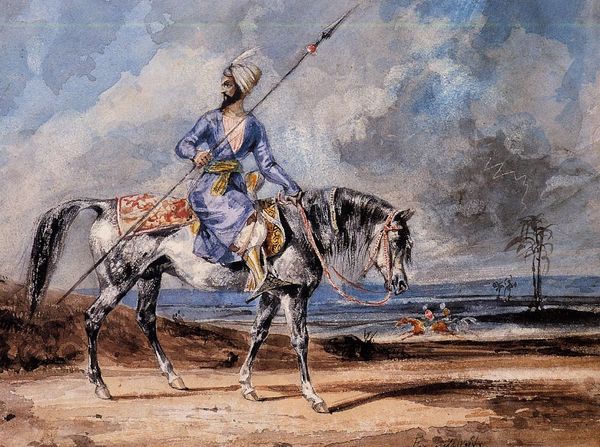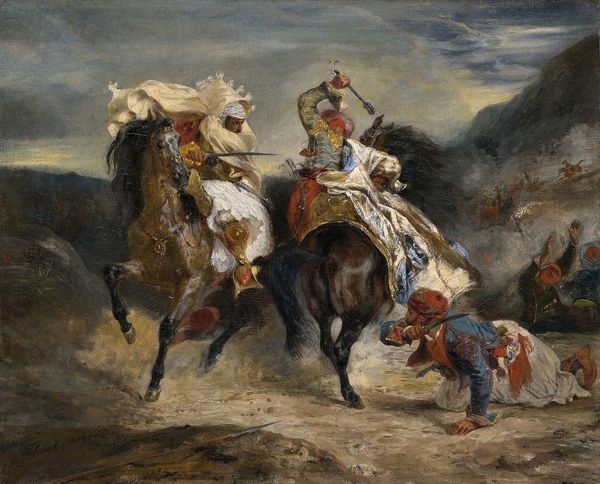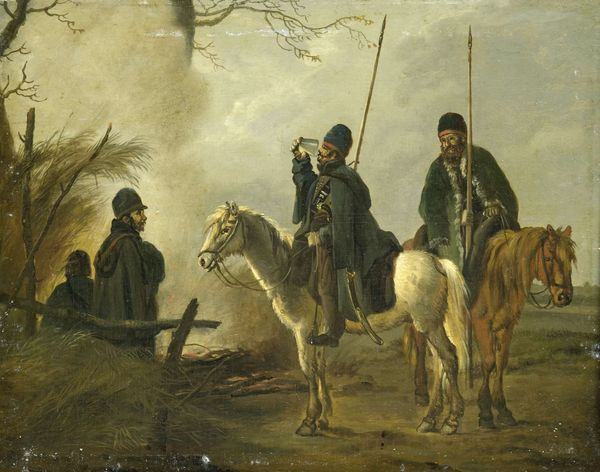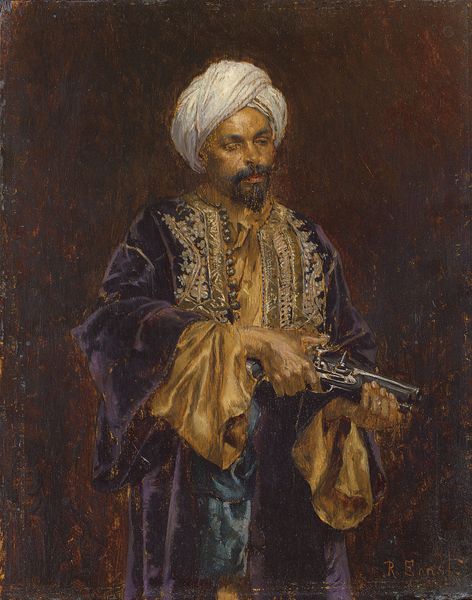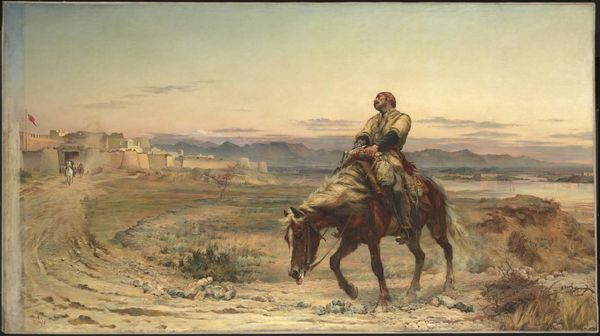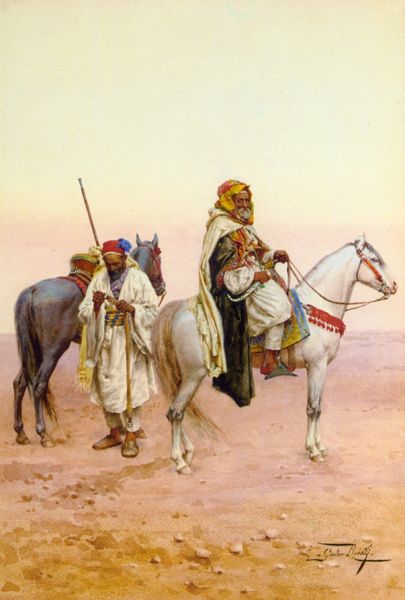
painting, oil-paint
#
portrait
#
figurative
#
painting
#
oil-paint
#
landscape
#
figuration
#
oil painting
#
romanticism
#
animal portrait
#
orientalism
#
portrait drawing
#
genre-painting
#
history-painting
#
portrait art
Copyright: Public Domain: Artvee
Eugène Delacroix painted ‘The Turkish Rider’ using watercolors and gouache, capturing a figure that embodies both power and exoticism. Note the turban; beyond mere headwear, it signifies status, wisdom, and a connection to the rich cultural tapestry of the Ottoman world. Consider the evolution of such head coverings, echoing through history from ancient Mesopotamian headdresses to Renaissance portraiture. Each iteration reflects the cultural values and power dynamics of its time. The rider, confident and composed, evokes a sense of authority. This pose is reminiscent of equestrian statues of Roman emperors, projecting an image of dominance. It is as if Delacroix tapped into a collective memory, subconsciously recalling historical symbols of leadership. The emotional impact is undeniable. We are drawn to the figure's commanding presence, stirred by the psychological weight of historical motifs. Like an ancient symbol, the turban and the rider's stance reappear throughout art history, constantly evolving, yet always resonating with echoes of the past.
Comments
No comments
Be the first to comment and join the conversation on the ultimate creative platform.
